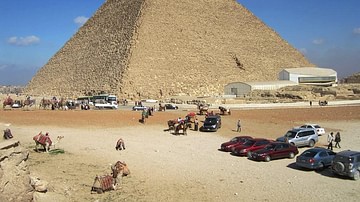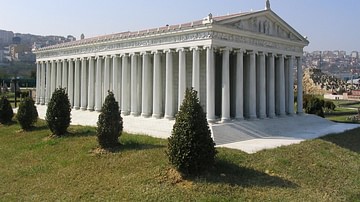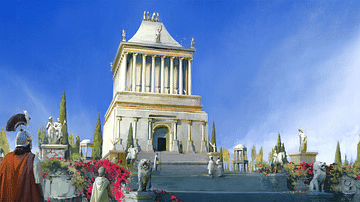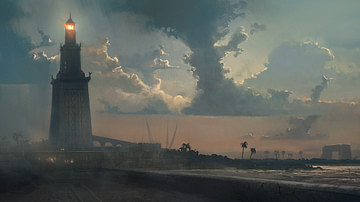In this collection we look in detail at each of the Seven Wonders of the Ancient World. The oldest and only surviving wonder is the Great Pyramid of Giza which held the record for the tallest structure in the world until the 19th century CE. The mysterious Hanging Gardens of Babylon have still got scholars debating if they were indeed at Babylon, and the Statue of Zeus at Olympia, a massive 12-metre-high (40 ft) gold and ivory figure, was not too big to go missing, last seen in Constantinople in the 4th century CE. The Mausoleum of Halicarnassus was so impressive it gave its name to all subsequent large tombs, while the Temple of Artemis at Ephesus was almost double the size of the Parthenon in Athens. The Colossus of Rhodes might not have stood astride the harbour of that city but it was another giant, towering 33 metres (108 ft). The representation of the sun god Helios, alas, proved too bulky to survive an earthquake, struck down just 50 years after it was set up. Finally, there is the Lighthouse of Alexandria, another genre-defining structure that has been copied all over the world wherever rocky shores and unseen shoals entice mariners to shipwreck.
The majority of scholars agree that the idea of cultivating gardens purely for pleasure, as opposed to the production of food, originated in the Fertile Crescent, where they were known as a paradise. From there the notion would spread throughout the ancient Mediterranean so that by Hellenistic times even private individuals, or at least the wealthier ones, were cultivating their own private gardens in their homes.







